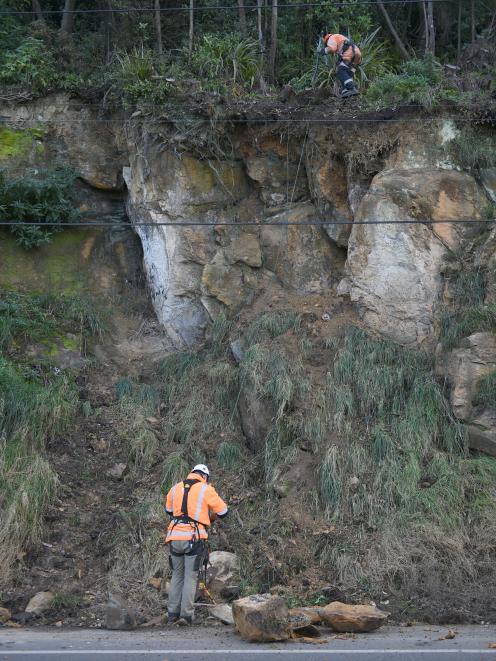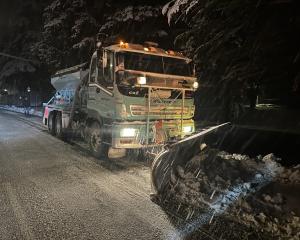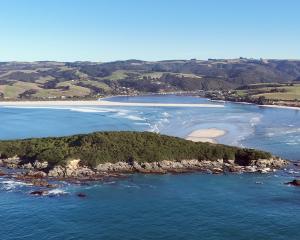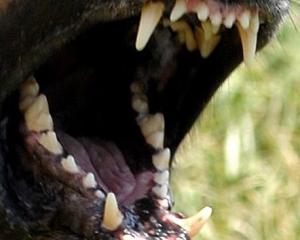
Mr Rodger, a qualified abseiler, worked with a Timaru abseiling subcontractor, Ian Reid, and other contract staff at the site, about 100m east of Parry St, where a half-tonne boulder fell on to the highway on June 1.
NZTA staff would continue to actively monitor the area, and late this month further work would also be undertaken at another site, close to the roundabout near the Forsyth Barr Stadium, and on a third site about 100m northeast from the site where he was working yesterday, Mr Rodger said.
Several boulders were removed from the bank yesterday, including one believed to weigh about a tonne. SH88, linking Dunedin with Port Chalmers, was classified as a nationally strategic state highway, the same classification as State Highway 1, between Dunedin and Christchurch.
The Kaikoura earthquake had further highlighted potential threats to key highway infrastructure, he said.
"It would be terrible for Otago ... if State Highway 88 was closed."
The highway was economically vital, providing access for export produce to Port Chalmers, and was also a busy traffic thoroughfare, providing the only access for many people who lived at various spots along it.
The highway was also a "really challenging" place to undertake maintenance work, given the presence of a 6000 volt power line which prevented water being used to remove loose material from banks, the relatively narrow width of the highway and the amount of overall traffic, which restricted the hours during which maintenance work could be undertaken.
Since July 1 last year, work on mapping the entire SH88 route for rockfall risk had been almost completed, so the area’s resilience could be assessed.
"This process may identify sites where permanent solutions such as rock-bolting, mesh draping or other slope stabilisation measures are justified."
These risks would be further analysed over winter to identify where further remedial work would be needed when the weather improved, he said.












